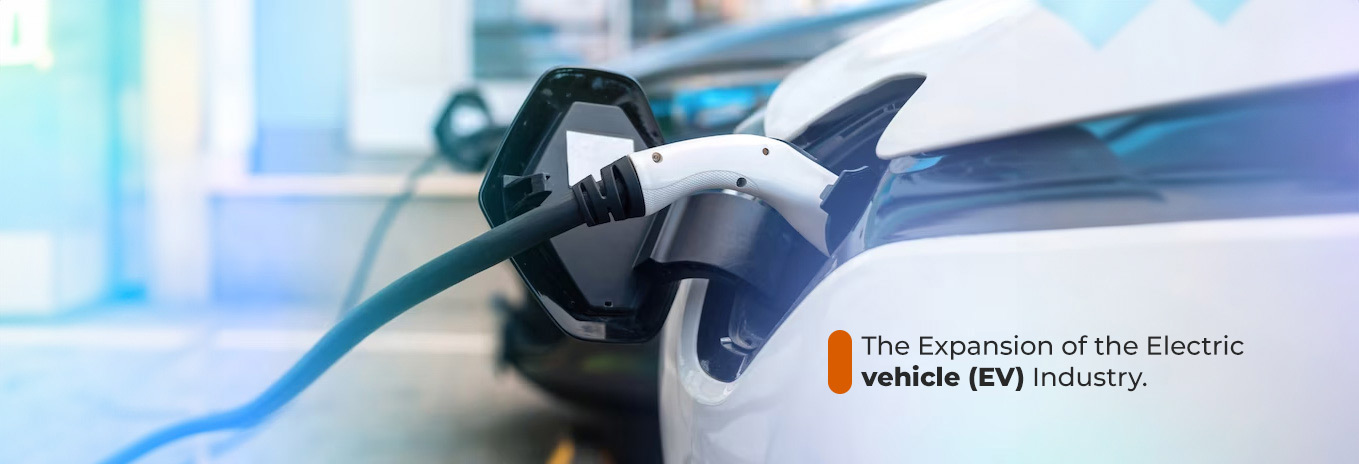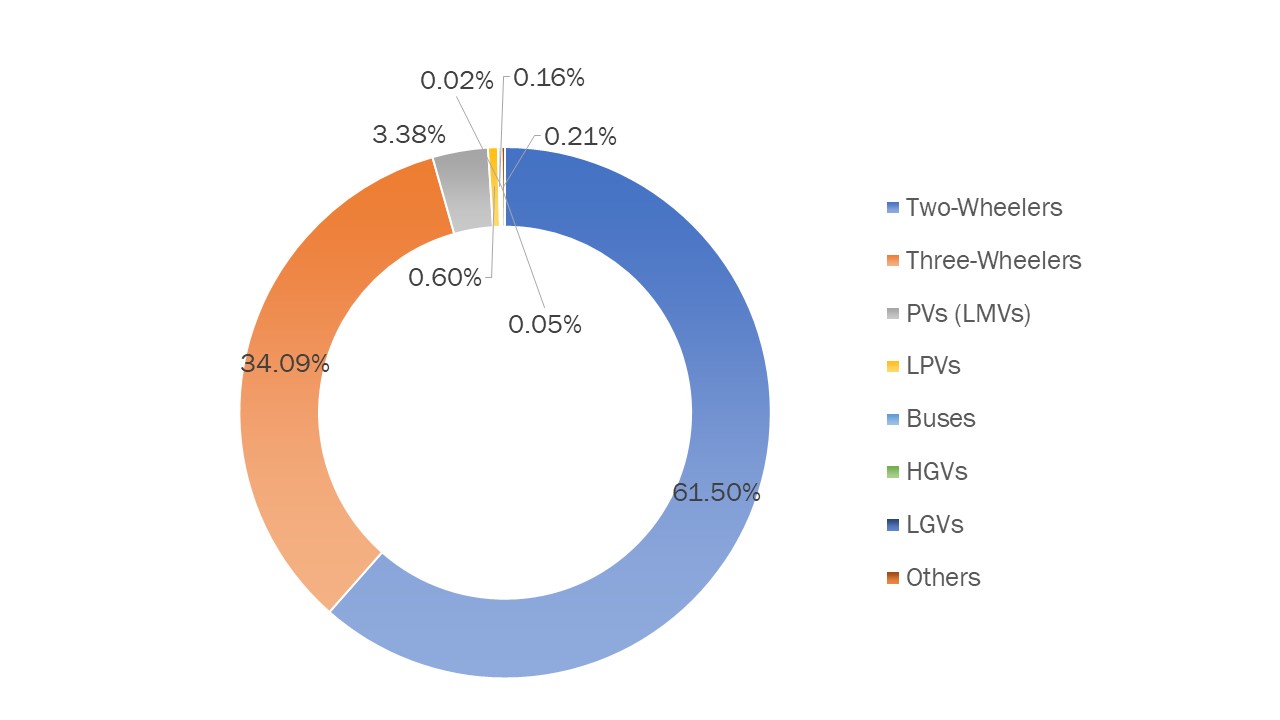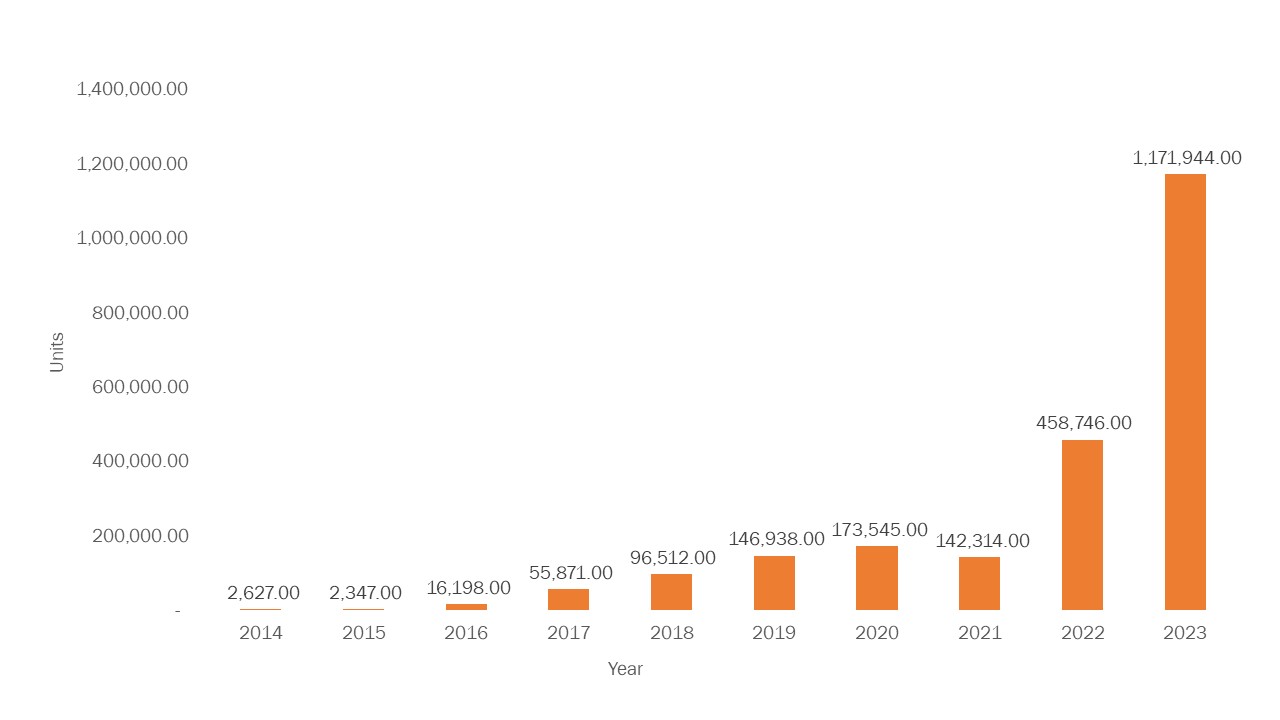What Are High-Bonding Adhesives?
High-bonding adhesives are specialized types of adhesives designed to create strong and durable bonds between two or more materials. These adhesives are formulated to provide superior adhesion and cohesion properties, making them ideal for applications where a high level of bonding strength is required. They are commonly used in various industries, including construction, automotive, aerospace, electronics, and manufacturing.
Why Do Industries Prefer High-Bonding Adhesives?

Industries and businesses use high-bonding adhesives for a wide range of applications due to many advantages these adhesives offer. Here are some of the primary reasons why industries prefer to use high-bonding adhesives:
- Strong and Durable Bonds: High-bonding adhesives are known for their exceptional bonding strength and durability. Industries often require components and materials to be securely joined together, and high-bonding adhesives can provide this strength, reducing the risk of component failure or detachment
- Weight Reduction: In industries such as aerospace and automotive manufacturing, reducing weight is crucial for improving fuel efficiency and overall performance. High-bonding adhesives allow for the replacement of heavy mechanical fasteners like screws and bolts, resulting in weight savings
- Enhanced Structural Integrity: Industries such as construction, civil engineering, and aerospace rely on high-bonding adhesives to create strong and reliable connections between structural elements. These adhesives contribute to the structural integrity of buildings, aircraft, and other critical infrastructures
- Improved Aesthetics: High-bonding adhesives can create seamless and clean bond lines, improving the appearance of finished products. In industries where aesthetics matter, such as consumer electronics and furniture manufacturing, this is a significant advantage
- Vibration and Noise Damping: Industries that involve machinery, transportation, and automotive applications use high-bonding adhesives to dampen vibrations and reduce noise. This can improve user comfort, product performance, and overall safety
- Design Flexibility: Adhesives allow for more flexible and innovative designs. Industries can create products with unique shapes and configurations that would be challenging to achieve with traditional fastening methods
- Corrosion Prevention: High-bonding adhesives can isolate dissimilar metals from each other, reducing the risk of galvanic corrosion. This is important in industries where metals are in contact and corrosion can lead to structural weakness or product failure
- Sealing and Bonding in One: Some high-bonding adhesives also offer sealing properties, making them suitable for applications where a strong bond and a watertight seal are both required
- Speed and Efficiency: Adhesives can often be applied more quickly and easily than traditional fasteners, reducing assembly time and labor costs. This efficiency is appealing to industries looking to improve production rates and reduce costs
- Environmental Considerations: High bonding adhesives can be formulated to have low or zero VOC emissions, making them environmentally friendly and aligning with sustainability goals
Overall, high-bonding adhesives offer a versatile and efficient means of joining materials and components in various industrial settings. Their ability to provide strong, durable, and reliable bonds, coupled with their flexibility and performance benefits, makes them an attractive choice for a wide range of industries, including aerospace, automotive, construction, electronics, and more.
To know more about the global aerospace interior adhesive market research study in terms of qualitative and quantitative research on present scenarios, future trends, factors driving the market consumption in upcoming years, industry challenges, and market growth potential for diabetic retinopathy treatment in the market kindly visit the link below.
https://www.databridgemarketresearch.com/reports/global-aerospace-interior-adhesive-market
Relation Between High-Strength Adhesives And The Electric Vehicle (EV) Sector
High-bonding adhesives play a pivotal and multifaceted role in the electric vehicle (EV) industry, shaping the fabric of modern electric mobility. As the world shift towards more sustainable transportation options, EVs have emerged as a cornerstone of this transformation and high-bonding adhesives have become indispensable components in the construction and assembly of these cutting-edge vehicles.
One of the primary ways high-bonding adhesives intersect with the EV industry is through structural bonding. Electric vehicles often feature lightweight structures made from materials such as aluminum and composite materials. These materials are chosen for their ability to reduce weight and enhance energy efficiency, a critical factor in extending the driving range of EVs. However, the challenge arises in joining these lightweight materials securely and maintaining structural integrity. High-bonding adhesives rise to this challenge, creating strong and durable bonds that replace or complement traditional mechanical fasteners. In doing so, they help ensure that key components, including chassis, frames, and body panels, remain securely connected, contributing to the overall safety and performance of electric vehicles.
The heart of an electric vehicle lies in its battery pack, the core component that stores and delivers the energy required for propulsion. High-bonding adhesives are instrumental in the assembly of these high-capacity battery packs. They play a vital role in bonding and sealing battery cells and modules, providing electrical insulation, and ensuring the mechanical stability of the entire battery system. Beyond these fundamental functions, they also protect the battery from environmental factors such as moisture, chemicals, and temperature fluctuations, which are critical in maintaining the longevity and safety of the battery pack. Thus, high-bonding adhesives are essential in addressing one of the central challenges of EVs: ensuring the reliable and safe operation of high-voltage battery systems.
The electric motor is another critical component in EVs, converting electrical energy into mechanical motion. High-bonding adhesives come into play in the assembly of electric motors, bonding magnets, stators, and other motor components. In this context, they offer excellent thermal conductivity, helping to dissipate the heat generated during motor operation. Effective heat dissipation is vital to prevent overheating and maintain motor efficiency. By securely bonding these components and facilitating efficient thermal management, high-bonding adhesives contribute directly to the performance and reliability of the electric motor, a cornerstone of electric vehicle propulsion.
Noise and vibration control are essential considerations in EV design, where passenger comfort is paramount. High-bonding adhesives serve to dampen noise and vibrations, enhancing the overall ride quality. These adhesives are employed in bonding sound-damping materials and components within the vehicle, such as panels and insulation. As electric vehicles often lack the noise associated with internal combustion engines, minimizing other sources of noise becomes even more critical. High-bonding adhesives contribute to the quiet, comfortable ride that EV enthusiasts have come to expect.
In addition to their structural and performance-enhancing roles, high-bonding adhesives are instrumental in sealing and gasketing applications within electric vehicles. Ensuring that sensitive electronic components, including the battery, control systems, and electric motors, remain protected from the elements is essential. These adhesives create watertight seals, preventing the ingress of water, dust, and contaminants. Such sealing measures are critical in safeguarding the reliability and longevity of these components, ultimately contributing to the long-term viability of the electric vehicle.
Weight reduction is a defining feature of electric vehicle design, as lighter vehicles typically offer longer driving ranges and improved energy efficiency. High-bonding adhesives support this objective by allowing manufacturers to reduce their reliance on heavy mechanical fasteners. These adhesives provide robust bonds that replace traditional screws, bolts, and rivets. The reduction in fastener use not only contributes to weight savings but also enhances the aesthetics of electric vehicles by eliminating visible fasteners, creating smoother and cleaner surfaces. This weight-saving advantage is particularly valuable in electric vehicle design, where every kilogram saved directly impacts the vehicle's performance and range.
Aesthetics plays a crucial role in the market appeal of electric vehicles. High-bonding adhesives offer the benefit of creating seamless and visually appealing bond lines. When used to bond exterior body panels and trim, these adhesives eliminate the need for visible fasteners, resulting in a sleek and cohesive appearance. The absence of protruding fasteners enhances the overall design aesthetics, making electric vehicles more attractive to consumers who appreciate both form and function.
Beyond these key functions, high-bonding adhesives are actively involved in thermal management within electric vehicles. Effective thermal management is essential to maintaining the efficiency and longevity of EV components. These adhesives facilitate the bonding of heat sinks, cooling plates, and other thermal management components, ensuring efficient heat dissipation. Given the high power densities and operating temperatures of EV components, such as the battery and electric motor, effective thermal management is paramount. High bonding adhesives, with their ability to conduct heat, help keep these critical systems within their optimal temperature range, improving performance and extending their operational life.
Moreover, environmental considerations are paramount in the development and production of electric vehicles. Some high-bonding adhesives are formulated with low or zero VOC (Volatile Organic Compound) emissions, aligning with the sustainability goals of the EV industry. By reducing the environmental impact of manufacturing processes and aligning with clean energy initiatives, these adhesives contribute to the broader mission of reducing the automotive industry's carbon footprint.
To know more about the global automotive adhesive market research study in terms of qualitative and quantitative research on present scenarios, future trends, factors driving the market consumption in upcoming years, industry challenges, and market growth potential for diabetic retinopathy treatment in the market kindly visit the link below.
https://www.databridgemarketresearch.com/reports/global-automotive-adhesives-market
The Expansion of the Electric Vehicle (EV) Industry

As per an article published by Invest India it is predicted that In recent years, electric vehicles (EVs) have garnered significant attention as a cleaner and more efficient alternative to traditional gasoline-powered cars. With advances in battery technology, the expansion of charging infrastructure, and rising consumer interest, EVs have become a viable choice for drivers worldwide. These vehicles represent a departure from conventional gasoline-powered cars, as they rely on electricity stored in batteries and electric motors to propel them.
India, is ranking as the third-largest automobile market globally in terms of sales (surpassing Germany and Japan), is now witnessing efforts from manufacturers and policymakers to encourage a transition towards more environmentally friendly transportation options. The automotive sector plays a pivotal role in India's economy, contributing 7.1 percent to its GDP and providing substantial employment opportunities. According to the Economic Survey of 2023, India's domestic electric vehicle market is projected to experience an impressive 49 percent compound annual growth rate (CAGR) from 2022 to 2030, with an annual sales target of 10 million EVs by 2030. Furthermore, the electric vehicle industry is anticipated to generate approximately 50 million direct and indirect jobs by 2030.
To support the growth of the EV industry, the Indian government has established a goal of achieving 30 percent electrification of the nation's vehicle fleet by 2030. To facilitate this transition, various incentives and policies have been introduced. The FY24 Union Budget provided significant support for the production of electric vehicles, the adoption of hydrogen fuel, and the integration of evolving technologies.
According to Vahan data, in March 2023, cumulative electric vehicle (EV) sales had reached an impressive milestone of 1,171,944 units in the fiscal year, marking the first time the million-unit mark has been crossed in a single fiscal year. In the calendar year 2022, EV sales in India totaled 1,023,735 units.
The figures for the fiscal year 2023 represent a remarkable 155% year-on-year increase compared to the 458,746 units sold in the fiscal year 2022. This substantial growth underscores the surging consumer demand for EVs, driven by rising gasoline and diesel prices, as well as compressed natural gas (CNG).
The EV industry's momentum is evident in the record-breaking sales of 131,175 units in March 2023, surpassing the previous best of 121,389 units in November 2022. The trend of monthly sales reaching six figures began in festive October 2022 and has continued through March 2023.
Leading this growth are the two most accessible segments of the EV industry: two-wheelers and three-wheelers. Two-wheelers, known for being the most affordable EV sub-category, witnessed a remarkable year-on-year growth of 185%, with 720,733 units sold in FY2023 compared to 252,539 units in FY2022, constituting 61.5% of total EV sales in India. Electric three-wheelers, including both passenger and cargo models, achieved a total sales figure of 399,540 units, marking a 47% year-on-year increase compared to 188,447 units in FY2022 and accounting for 34% of total EV sales in FY2023. Consequently, the combined sales of two-wheelers and three-wheelers dominate the EV industry, making up a substantial 95% of the record-breaking EV sales figures.
Source:- Vahan data

Source:- Vahan data

Source:- Vahan data
To know more about the electric vehicles battery market research study in terms of qualitative and quantitative research on present scenarios, future trends, factors driving the market consumption in upcoming years, industry challenges, and market growth potential for diabetic retinopathy treatment in the market kindly visit the link below.
https://www.databridgemarketresearch.com/reports/global-electric-vehicles-battery-market
What is the rationale for using high-bonding adhesives in electric vehicle (EV) batteries?

High-bonding adhesives are indispensable components in the construction and assembly of electric vehicle (EV) batteries. These adhesives serve multiple critical functions throughout the battery manufacturing process, contributing to the efficiency, safety, and overall performance of EVs.
One primary application of high-bonding adhesives is in battery cell bonding. EV battery packs consist of numerous individual battery cells, and these adhesives are used to securely bond these cells together. This bonding enhances the structural integrity of the battery pack, prevents cell movement, and aids in the even distribution of mechanical and thermal stresses.
Furthermore, high-bonding adhesives are utilized in thermal management within EV batteries. They assist in attaching heat-conductive materials such as thermal interface pads or heat spreaders to the battery cells. This facilitates efficient heat dissipation, which is crucial for maintaining battery temperature within safe limits and extending battery lifespan.
Additionally, these adhesives are employed in sealing and insulation applications. They help seal the battery modules and packs, preventing moisture ingress and protecting the sensitive electronics inside. Moreover, they aid in insulating battery components to reduce the risk of short circuits and enhance overall safety.
As per the article published by AZoNetwork ,the worldwide electric vehicle battery market saw a 7.1% compound annual growth rate, rising from $23.74 billion in 2021 to reach $25.43 billion in 2022.
The dominance of lithium-ion batteries in the electric vehicle battery market persists because of their rapid charging capabilities and high energy density, making them the sole technology meeting original equipment manufacturers' (OEM) criteria for electric vehicles with sufficient range and fast charging capabilities.
A significant driver of heightened demand is the declining cost of lithium-ion batteries, which plummeted from $800-900 per kilowatt-hour (kWh) to a range of $130-140 per kWh in 2021.
The COVID-19 pandemic had a substantial impact on the electric vehicle battery market's growth. Material extraction, including cobalt, lithium, aluminum, and nickel, faced disruptions, causing production delays. The unavailability of raw materials also affected manufacturing facilities and supply chains, resulting in reduced electric vehicle sales.
despite the pandemic-related challenges, the electric vehicle battery market displayed resilience as activities resumed toward the end of 2020. The decreasing cost of batteries heightened consumer awareness regarding electric vehicles, and various factors contributed to the increased adoption of electric vehicle batteries.
Data Bridge Market Research analyses the global electric vehicle charging stations is expected to grow at an estimated CAGR of 35.74% in the coming period
To know more about the global electric vehicle charging stations market research study in terms of qualitative and quantitative research on present scenarios, future trends, factors driving the market consumption in upcoming years, industry challenges, and market growth potential for diabetic retinopathy treatment in the market kindly visit the link below.
https://www.databridgemarketresearch.com/reports/global-electric-vehicle-charging-stations-market
Here are a Few Noteworthy Startups Set to Advance EV Battery Tech and Cut Production Costs
Liminal
Liminal stands out by offering a comprehensive solution that combines both hardware and software, leveraging ultrasound technology. This innovative approach assists automakers in enhancing their battery manufacturing processes and preventing costly issues like the $800 million Chevrolet Bolt recall. Liminal's technology is designed to identify defects during manufacturing, harnessing machine learning for insights that can boost battery production in terms of quantity and speed.
Lithium Werks
Lithium Werks specializes in the development of APR18650m1B Power Cells, which find applications in various power, pulse, and standby scenarios. These cells employ Nanophosphate battery technology, known for its stable chemistry, rapid charging capabilities, consistent performance, extended lifespan, and enhanced cost-efficiency.
QuantumScape
QuantumScape has gained attention for its solid-state battery technology, which it claims to be among the best in the market. These batteries have the potential for real-world use in electric vehicles, with a focus on addressing the cost and rapid charging challenges associated with traditional lithium-ion batteries. QuantumScape has garnered substantial funding, raising $300 million since its establishment in 2010 and going public in November 2020.
The Outlook for Electric Vehicle Batteries in the Coming Years

The electric vehicle battery market in both the United States and Europe is poised for substantial expansion in the forthcoming years. This growth can be attributed to stringent government emissions regulations, a rising preference for electric vehicles, increased disposable income, heightened consumer awareness of the advantages of electric cars, a growing environmental consciousness, and the strong presence of major automakers within these regions.
Furthermore, the demand for sustainable products and the embrace of cutting-edge technologies serve as additional drivers for market development in these areas.
With the increasing sales of electric vehicles, there is an anticipated influx of batteries into the market, eventually reaching the end of their operational life. This situation raises pertinent questions about their management, including whether they will be recycled or find a second life in alternative applications.
To establish a robust and sustainable global lithium-ion battery value chain, securing access to essential battery component materials is crucial. Extensive battery recycling initiatives can play a pivotal role in ensuring a consistent supply of these materials for the value chain, contributing to the long-term sustainability and growth of the electric vehicle battery industry.
Conclusion:-
The increasing adoption of electric vehicles and the pivotal role of high bonding adhesives in EV battery manufacturing mark a significant development in the automotive industry. As the EV market continues to grow, the demand for advanced adhesive technologies is expected to rise in tandem. Collaboration between adhesive manufacturers, automotive companies, and regulatory bodies will play a critical role in ensuring the safe and sustainable integration of high bonding adhesives in EV battery production. This synergy holds the potential to reshape the automotive landscape and accelerate the global shift towards sustainable transportation.








